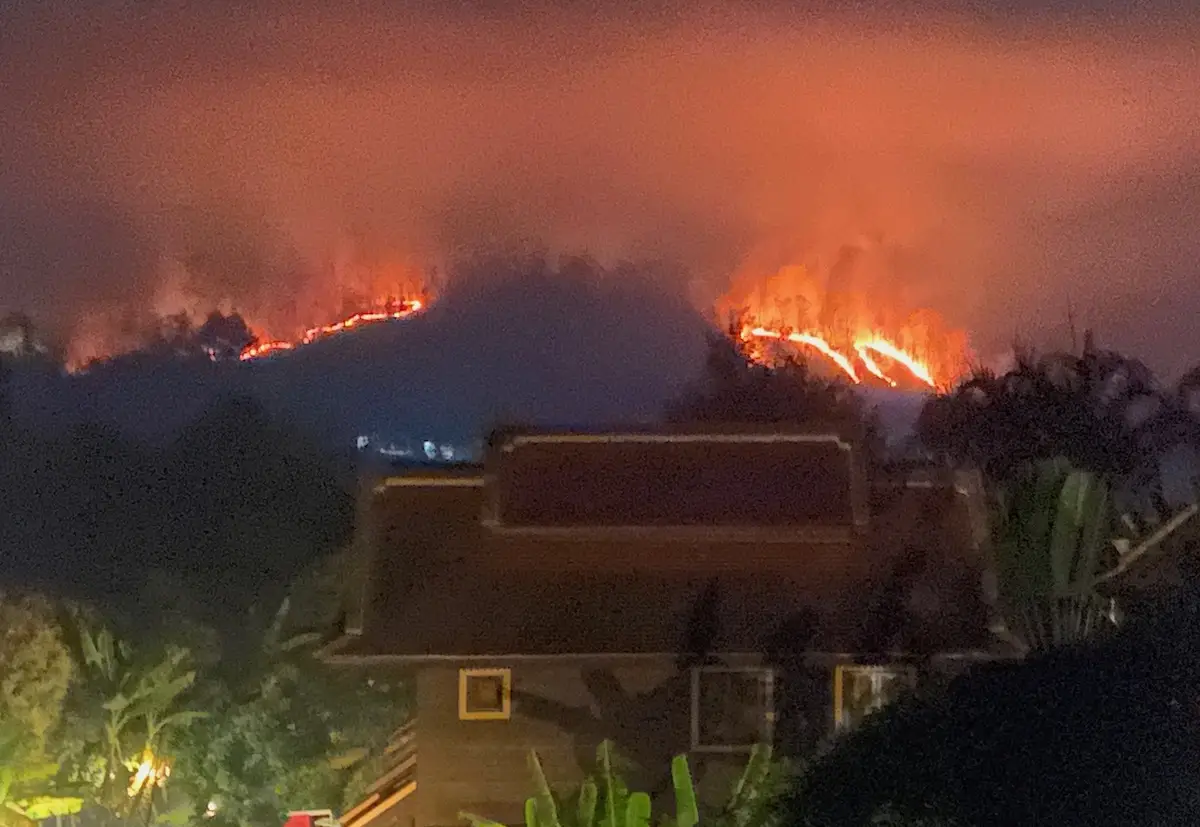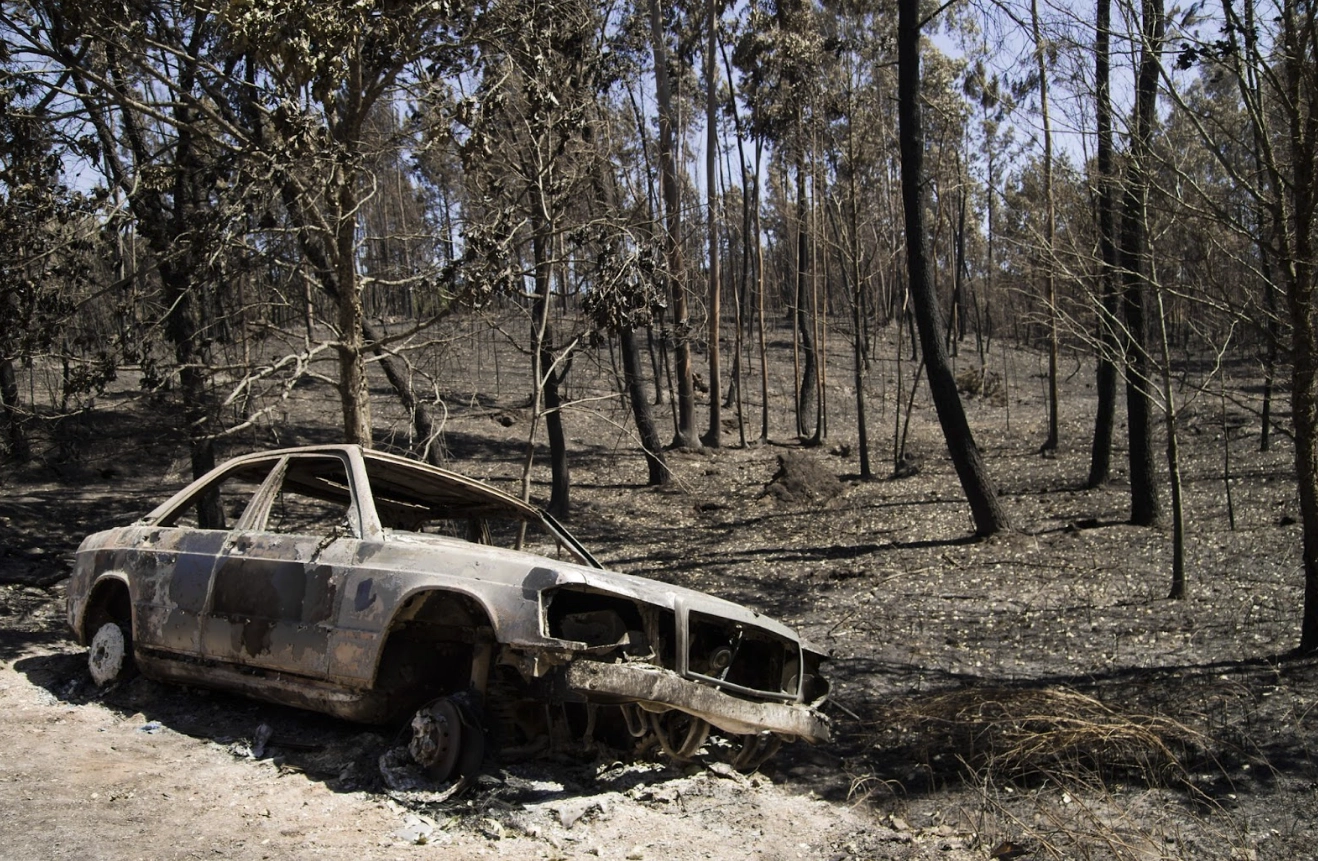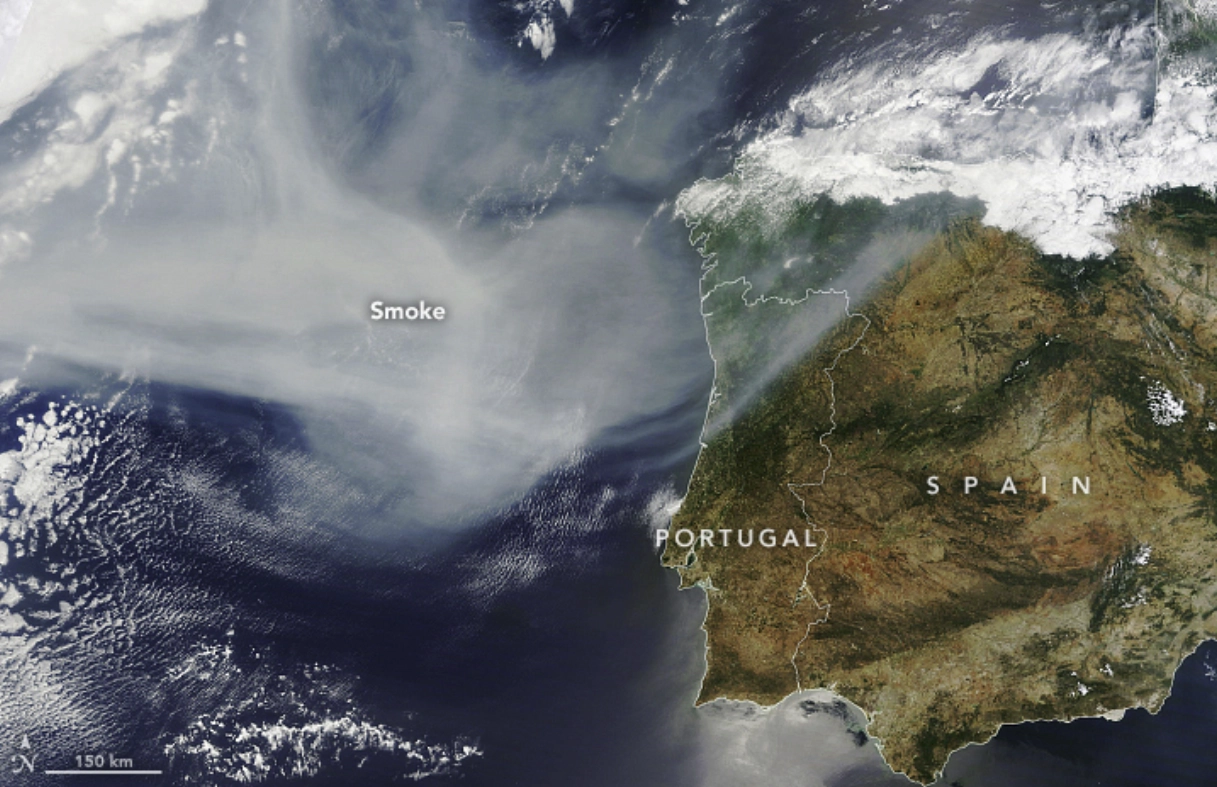Open and Accurate Air Quality Monitors
We design professional, accurate and long-lasting air quality monitors that are open-source and open-hardware so that you have full control on how you want to use the monitor.
Learn Moreby Ethan Brooke on June 20, 2024
A big thank you to Ethan Brooke for the article below on wildfire smoke. Ethan runs the popular Breathe Safe Air Site, and I am extremely happy that he recently decided to work with us. AirGradient would not exist if, in 2019, the hill opposite my house in Northern Thailand had not been on fire.

So this is an extremely important (and emotional) topic for me, and even more importantly, many people are not aware that wildfire smoke is actually more dangerous than smoke from traffic.
If you have any feedback or questions, please reach out to us.
Achim Haug
Imagine waking up to a hazy, smoke-filled sky even though the nearest wildfire is hundreds of miles away.
This isn’t just a hypothetical scenario - in 2020, smoke from the West Coast wildfires in the United States travelled across the country, reaching as far as New York City and Europe. Wildfires are on the rise, both in frequency and intensity. The 2023 Canada wildfire season was marked as the most intense on record. This surge is propelled by climate change and other environmental factors, making the need to comprehend the dangers of wildfire smoke more pressing than ever. Whether you reside in a wildfire hotspot like the United States, Canada, Thailand or Australia, or regions far from these fires, the smoke can still reach and impact you.
Wildfire smoke is an issue close to our hearts. AirGradient’s commitment to air quality monitoring was born from the urgent need for low-cost air quality monitors during the 2019 Thai wildfires. Witnessing firsthand the severe impact of wildfire smoke, our founders dedicated themselves to providing accessible and reliable air quality solutions. Now, our team has grown, and we continue to provide monitors to those in wildfire-stricken areas.

Unfortunately, as wildfires become more common, it is crucial to be aware of the dangers of wildfire smoke. The unique pollutants released during wildfires directly threaten those in the immediate vicinity and affect air quality on a much larger scale. In this article, we will explore what makes wildfire smoke so dangerous. Every type of smoke is a mixture of toxic particles and gases released by burnt materials, but rarely are they as dangerous as wildfire smoke.
At first glance, smoke might seem like a uniform pollutant, but its composition can vary significantly depending on the source. Smoke from cooking, for example, primarily contains particulate matter and volatile organic compounds (VOCs) from burning food and oil. On the other hand, traffic-related smoke includes a mix of pollutants like nitrogen oxides (NOx) and particulate matter from the combustion of fossil fuels.
Wildfire smoke, however, is far more complex and dangerous. It is a mixture of gases, chemicals, and fine particles from the combustion of various materials, including trees, shrubs, buildings, and vehicles. This complexity increases the toxicity and health risks associated with wildfire smoke.
Think of it this way: everything that burns in a fire contributes chemicals to the smoke cloud. Since wildfires consume anything in their path, the resulting smoke is extremely toxic.
What would your answer be if I asked you what is more harmful, wildfire smoke or traffic smoke? At least for me, it would certainly be traffic smoke. However, it’s the exact opposite.
A study published in 2021 highlighted that wildfire smoke is even more dangerous than traffic-related smoke. Researchers found that it causes more significant health impacts than urban air pollution sources like traffic, underscoring the unique and severe dangers posed by wildfire smoke.
To fully grasp why wildfire smoke poses a significant danger compared to other forms of smoke, we need to delve into the specific pollutants it contains. This leads to a fundamental issue: the toxicity of wildfire smoke is very hard to assess because we often don’t know the exact composition of the smoke.
When wildfires consume natural biomass such as trees and bushes, we can predict the types of gases and particles that will be released. However, wildfires are uncontrollable by nature and often engulf everything in their path, including vehicles, homes, barns, and more. The combustion of these diverse materials releases a myriad of additional toxins into the smoke, making it exponentially more harmful and less predictable.

Despite these uncertainties, research has been conducted on wildfire smoke across different locations and times, consistently showing that it is highly toxic due to the unique pollutants and concentrations it carries that are not typically present in other forms of smoke. Let’s take a closer look at the composition of wildfire smoke.
At its core, wildfire smoke is, of course, smoke. Therefore, many of the gases and particles that are found in normal smoke are also found in wildfire smoke. This is an inexhaustive list of airborne contaminants - besides the common Particulate Matter (PM) - found in many types of smoke but that are found in higher concentrations in wildfire smoke:
| Gases | VOCs | PAHs |
|---|---|---|
| Carbon Dioxide (CO2) | Formaldehyde | Naphthalene (NAP) |
| Carbon Monoxide (CO) | Acetaldehyde | Acenaphthylene (ACY) |
| Nitric Oxide (NO) | Methanol | Acenaphthene (ACE) |
| Nitrogen Dioxide (NO2) | Acrolein | Fluorene (FLU) |
| Methane (CH4) and many more | and many more | and many more |
Nearly all of these pollutants can also be found in other forms of smoke. However, wildfire smoke also has some generally unique pollutants, like methoxy phenols, which are generally formed from biomass combustion. This airborne contaminant is not particularly harmful, though, so what makes wildfire smoke so dangerous compared to other forms of smoke? The answer is threefold:
Wildfire smoke often has exceedingly high concentrations of these pollutants, which aren’t found in other forms of smoke.
As wildfires consume cars, houses, barns, and sometimes more, an increasingly dangerous (and largely unknown) ‘cocktail’ of gases and particles is added to the cloud. Many PAHs are only found in wildfire smoke and not urban air pollution.
Seemingly similar pollutants between all types of smoke (such as PM2.5) are very different in wildfire smoke.
The third point here is the key.
A common misconception is that PM2.5 (and other particle classifications) refer to uniform particles. In reality, PM2.5 is a broad category that includes a wide variety of particles smaller than 2.5 microns in diameter, and not all PM2.5 is equally harmful. Particulate matter can vary greatly in terms of the health risks posed, and variables such as size, coating, and composition make the particles found in wildfire smoke significantly more dangerous than particles from other sources of smoke.
A very telling example is this study, which found that a 10 μg/m³ increase in PM2.5 from wildfire smoke has been associated with a 1.3% to 10% increase in respiratory hospitalisations, compared to a 0.67% to 1.3% increase for non-wildfire PM2.5.
Another study on mice indicated that the respiratory toxicity of wildfire PM is ten times greater than that of equivalent doses of ambient PM. Additionally, PM concentrations are typically much higher in wildfire smoke, illustrating why it is so exceedingly toxic.
Since it’s primarily the unique composition of PM2.5 found in wildfire smoke that makes it so uniquely dangerous, let’s now take a look at why these particles are so dangerous.
Wildfire PM2.5 is primarily carbon-based, with 5-20% elemental carbon and at least 50% organic carbon. This organic fraction includes more polar organic compounds, which have a higher oxidative potential compared to urban PM2.5. Substances with high oxidative potential, such as wildfire PM2.5, contain or promote the formation of free radicals. This can lead to oxidative stress, which we discuss below.
The high carbon content in wildfire PM2.5 includes more free radicals - unstable molecules with an unpaired electron. Free radicals are highly reactive and can cause oxidative stress by attacking cell components such as lipids, proteins, and DNA. This damage disrupts normal cellular functions and can lead to cell death. To fully explain how dangerous free radicals are, here are some of the health impacts they cause:
In addition to its carbonaceous nature, wildfire PM2.5 contains higher levels of carcinogenic PAHs (Polycyclic Aromatic Hydrocarbons). PAHs are dangerous chemicals found in smoke and soot that can cause cancer, DNA mutations, and respiratory problems. They are particularly harmful when inhaled or upon skin contact.
Since PAHs form from incomplete combustion, they are more prevalent in wildfire smoke, where smouldering and incomplete burning are common. The organic carbon fraction in wildfire smoke contains several known toxic and carcinogenic PAHs, such as benzo[a]pyrene and dibenzo[e,l]pyrene, contributing to its higher toxicity than urban PM2.5.
Wildfire smoke often contains significant amounts of heavy metals like lead, zinc, and copper. These metals are particularly harmful as they can catalyse the formation of reactive oxygen species (ROS), leading to increased oxidative stress and inflammation. These metals typically come from the combustion of infrastructure and vehicles.
The organic compounds in wildfire PM2.5 can easily react to form reactive oxygen species (ROS). These highly reactive molecules cause significant cellular damage by attacking and oxidising cell membranes, proteins, and DNA, leading to cell death or malfunction. Wildfire PM2.5 has a higher oxidative potential than urban PM2.5, generating more ROS and causing greater cellular and tissue damage.
Wildfire PM2.5 particles often have organic coatings that enhance their ability to penetrate biological membranes, making the toxic compounds they carry, including PAHs and heavy metals, more readily absorbed by cells and tissues. This increased bioavailability allows these particles to deliver their toxic payload more effectively, leading to greater health impacts.
The fine tar balls created by wildfires are small enough to penetrate deep into the alveoli of the lungs. Their small, spherical shape makes them more likely to be retained in lung tissue, prolonging exposure and increasing harm. Furthermore, the shape and composition of fine tar balls allow them to adhere more strongly to lung tissues compared to other forms of PM2.5, resulting in a higher likelihood of causing long-term damage and inflammation.
The first aspect that makes wildfire smoke so harmful is its unique composition. However, we also need to consider the second aspect - how far and easily it can travel.
One of the most alarming aspects of wildfire smoke is its ability to travel vast distances as it gets pushed high into the atmosphere and is carried by the wind, carrying its toxic components far from the original fire. This widespread dispersion means that even individuals far from the fire source can experience hazardous air quality and related health issues.
Wildfire smoke has been known to travel thousands of miles, crossing continents and oceans. Here are some notable examples:
Canadian Wildfires (2023): Smoke from the intense wildfire season in Canada travelled across the Atlantic, reaching Europe. This extensive reach underscores the global impact of such events.

Australian Bushfires (2019-2020): During this season, smoke spread across the Pacific Ocean, affecting air quality in South America and reaching New Zealand, over 2,000 kilometres away. The Australian bushfires released approximately 715 million tons of CO2 into the atmosphere, highlighting the significant environmental impact. I was in New Zealand at the time, and the air quality difference was apparent, even though the fires were thousands of kilometres away.
West Coast U.S. Wildfires (2020): Smoke from these fires travelled across the United States, reaching as far as New York City. The National Aeronautics and Space Administration (NASA) documented this event, illustrating the extensive travel of wildfire smoke.
The ability of wildfire smoke to travel vast distances means that even people living far from the fire’s source can experience adverse health effects. The fine particulate matter (PM2.5) and toxic chemicals in wildfire smoke can cause immediate and long-term health issues, even if the smoke is not visibly noticeable.
The reality is that you can’t escape wildfire smoke if the winds are unfavourable. While you may be located relatively close to a wildfire and not experience any smoke, it all comes down to wind direction because as soon as the wind changes, it’s possible for the smoke to spread thousands of kilometres in that direction.
Since it comes down to the wind direction, wildfire smoke can also pose a unique risk compared to other types of smoke through prolonged exposure. Where we are typically only exposed to other types of smoke for short periods, wildfire smoke can be very concentrated and last for days or weeks.
Wildfire smoke poses a unique and significant threat due to its hazardous composition and the vast distances it can travel. Unlike other forms of smoke, wildfire smoke contains a complex mix of toxic pollutants, including high levels of PM2.5, free radicals, and heavy metals, all contributing to severe health risks.
The ability of wildfire smoke to disperse over thousands of miles means its impact is far-reaching, affecting air quality and health in regions far removed from the original fire. Additionally, the prolonged exposure caused by wildfires can lead to chronic health issues, making it crucial to understand and mitigate the dangers of wildfire smoke.
Luckily, there are steps we can take to protect ourselves from wildfire smoke, and we will discuss them in an upcoming article.
Curious about upcoming webinars, company updates, and the latest air quality trends? Sign up for our weekly newsletter and get the inside scoop delivered straight to your inbox.
Join our Newsletter
We design professional, accurate and long-lasting air quality monitors that are open-source and open-hardware so that you have full control on how you want to use the monitor.
Learn More